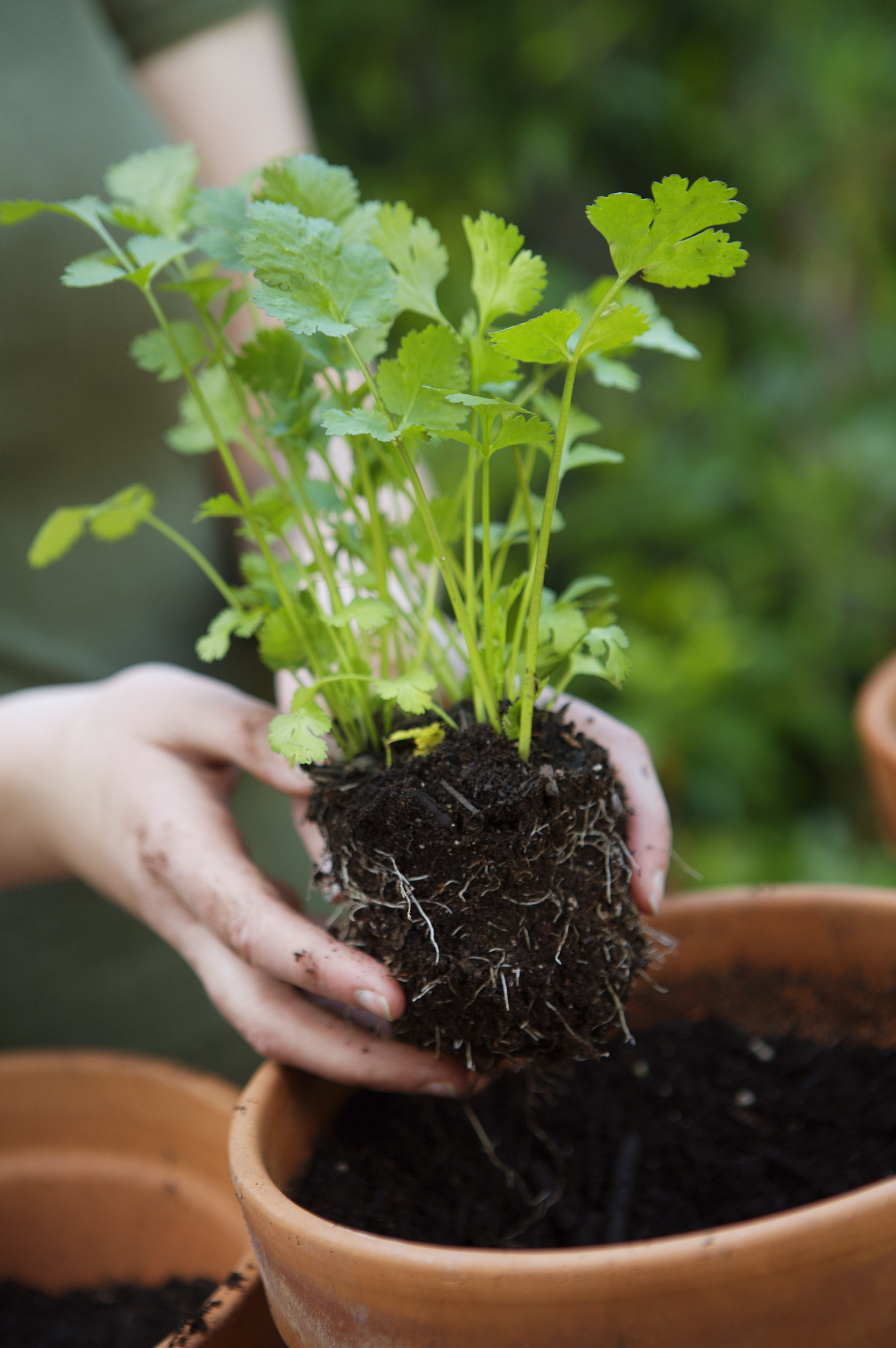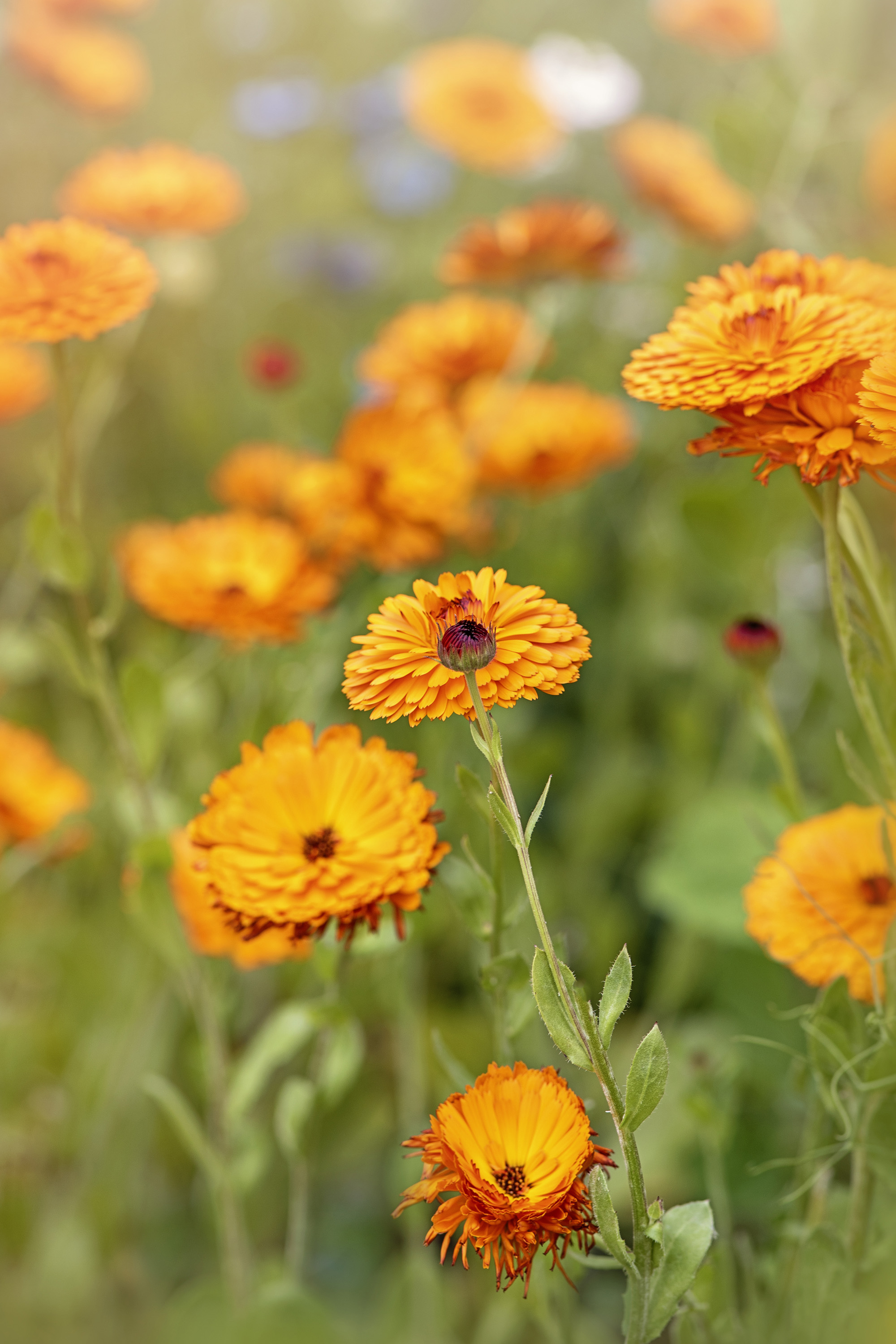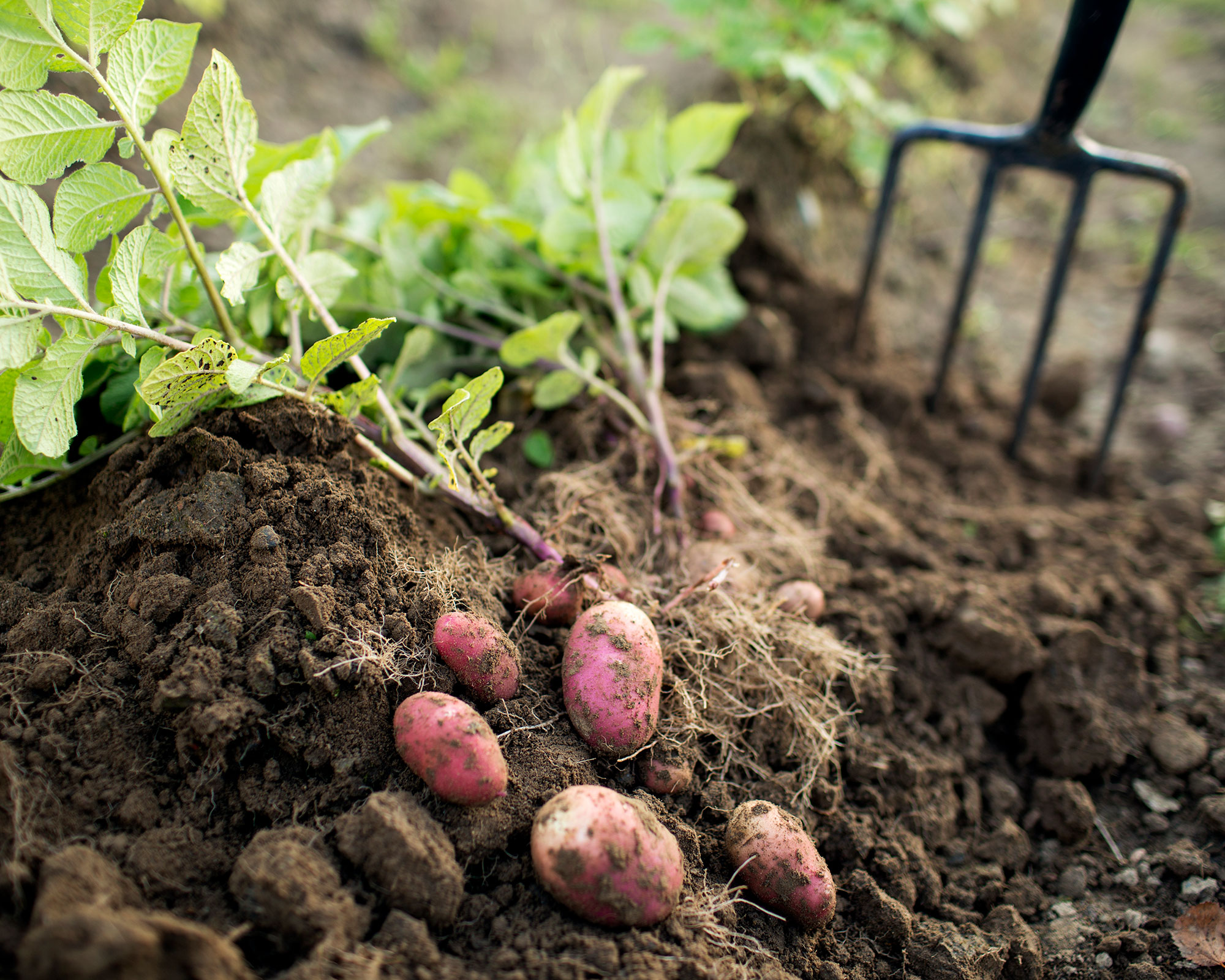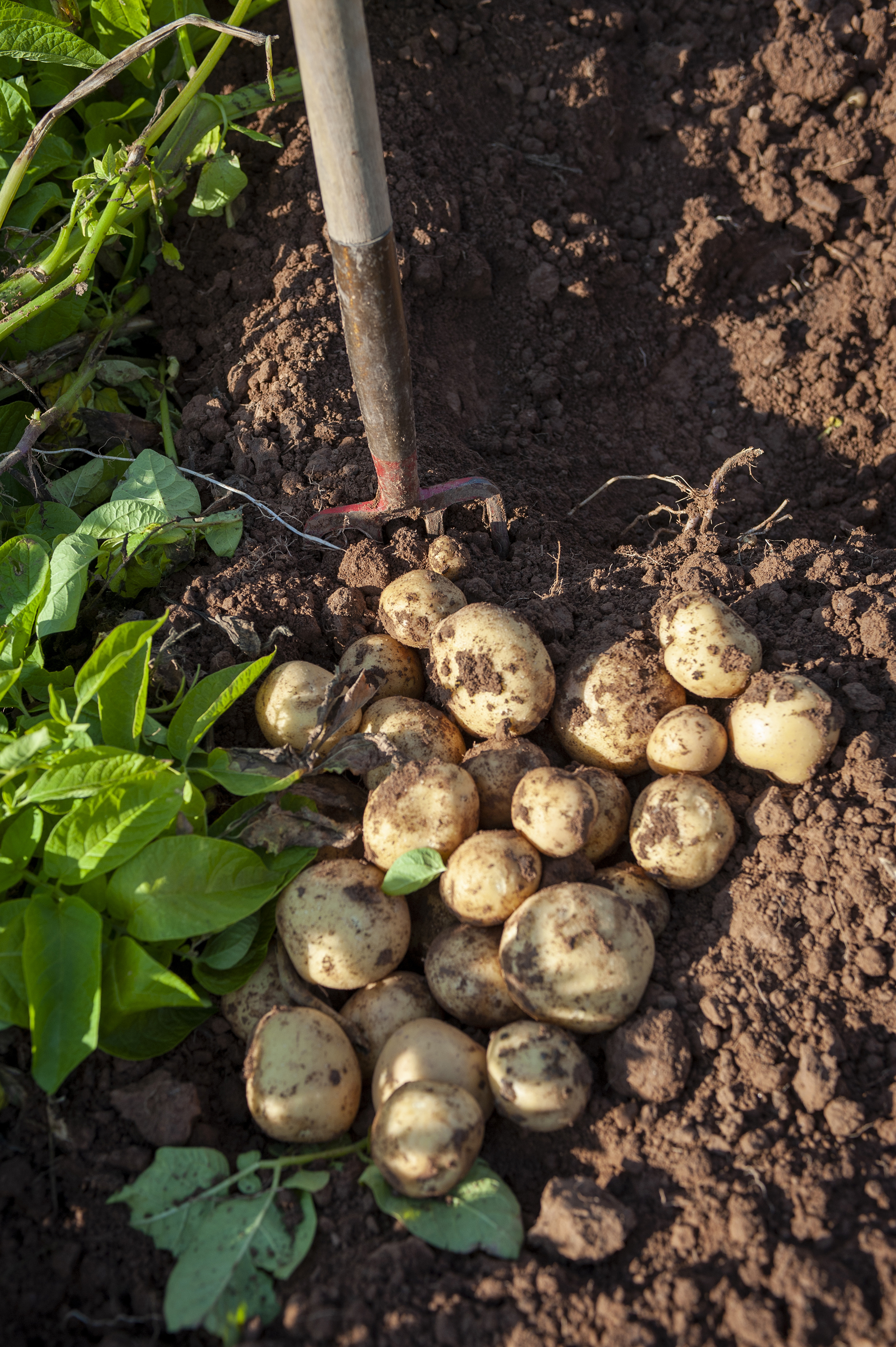Potato companion plants – the best veg, herbs and flowers to grow with potatoes
Learn about the best potato companion plants that will help you to grow an abundant crop of this versatile vegetable


If you want a good crop of potatoes, learn the best potato companion plants to grow alongside them, which should help you to succeed in producing an abundant harvest of these terrific tubers.
When thinking about the best potato companion plants, it’s important to consider what plants might best benefit your crop. Companion planting has been practised by gardeners for years. The idea is simple: you plant your crop next to different herbs, flowers or vegetables that are known to benefit them as they grow.
If you are growing potatoes, get the planting surrounding your potato plants right and you’ll not only improve the soil nutrients, but may even manage to discourage an array of pests from getting the first munch of your crop.
Knowing when to plant potatoes is the first step. Then ensure a good yield that will keep you well fed throughout the year by planning when to plant vegetables alongside them that will help to boost the health and growth of your potato plants. These are all factors to consider as part of your vegetable garden ideas.
Potato companion plants

The best potato companion plants are those that bring some benefit to the sprouting spuds. This may be in deterring pests that would otherwise attack the young potato plants, improving soil nutrients available to the growing tubers, helping to increase the potato harvest, or enticing essential pollinators, such as bees and butterflies, to the potato plants. All of these benefits are wonderful for permaculture gardening and for helping to create a sustainable garden with less reliance on manmade pest controls.
Potato companion plants can also act to create a better growing environment for the tubers, whether that is providing beneficial shade, ground cover or by breaking up the soil.
'Although there is limited scientific research surrounding companion gardening, many gardeners find it extremely beneficial to their plant’s performance,' says Sue Sanderson of seed and plant company Thompson & Morgan.
Design expertise in your inbox – from inspiring decorating ideas and beautiful celebrity homes to practical gardening advice and shopping round-ups.
Potatoes look great in the vegetable garden, but you can also grow potatoes in a container or bag as small vegetable garden ideas and they need little looking after. If you plant in succession, you can enjoy a potato harvest from June right through to October.
Vegetables as potato companion plants

Through companion planting potatoes wisely when you are planning a kitchen garden you can bring benefits to all crops involved.
'Avoid monocultures – where the same type of vegetable crop is grown en masse or in rows – as this makes it much easier for pests and diseases to find their favorite plants and then spread quickly,' says Sue Sanderson.
Among the good potato companion plants are crops in the cabbage family. Growing broccoli, cabbage, cauliflower and kale, which all have shallow root systems, means they won’t compete for the space or nutrients that deep-rooted potatoes will need. Correspondingly, potatoes also make good kale companion plants.
Beans and other legumes are good potato companion plants as they release nitrogen into the soil, which helps improve yields and crop quality. In return, potato plants deter the Mexican bean beetle, which attacks many legumes.
Growing corn grown as companion plants for potatoes is believed to improve the flavor of the tubers and make them grow better. Corn also grows tall with shallow roots, so this makes the best use of available space in the vegetable patch.
The pungent aroma of garlic and onions is thought to repel some pests and to confuse or distract others, putting them off the scent of the potatoes.
Practising crop rotation can further enhance the cropping performance of potatoes and other vegetables.
Companion planting potatoes with herbs

There are many good planting companions for potatoes in the herb family – many of which also go perfectly in dishes cooked with potatoes. One of the herb garden ideas is to plant herbs among edible crops in raised garden beds.
Chives attract beneficial insects to either eat pests or improve the yield. Added to which, they are wonderful as an addition to a potato salad or baked potato dish.
Growing cilantro – or coriander – as a potato companion plant also attracts beneficial insects, such as ladybugs, hoverflies and wasps, while horseradish is understood to improve the disease resistance of potatoes by producing pest repelling odors and chemicals.
It is worth learning how to grow parsley and thyme, which are believed to be good planting companions for potatoes as they improve the flavor of the tubers, while also attracting beneficial insects, such as hoverflies.
'Mint also makes an excellent potato companion plant as it deters pests, including whitefly, ants and mice, and the flowers attract bees, butterflies and hoverflies,' says herb specialist Jekka McVicar.
Flowers as potato companion plants

Flowers planted in among the vegetable crops can add a pretty, colorful element to a vegetable patch, but also have hidden talents as potato companion plants.
Nasturtiums make complementary planting companions for potatoes as they act as an attractive sacrificial plant, luring predatory pests, such as aphids and potato beetle, away from the potato crops onto themselves. Using trap plants for pest control is a popular gardening trick.
By contrast, if you grow marigolds, they emit a strong odor that repels a variety of insect pests, but correspondingly they are good plants for pollinators.
Petunias may also protect potatoes from certain pests by confusing them with their strong fragrance so that the insects can't find their target crop.
You could also try growing potatoes and other edible crops among the ornamentals as part of your flower bed ideas to make the best use of all space available, especially in a small garden.

What can you not plant next to potatoes?
There are also vegetables and flowers that you should not plant near potatoes. 'This may be because they compete for space, light, water, soil nutrients, or attract insects detrimental to the companion vegetables,' says gardening writer and photographer Leigh Clapp.
Potatoes are part of the same nightshade plant family as tomatoes and capiscum, or peppers so these do not make good planting companions for potatoes. They will compete for the same nutrients if planted side by side. Plus pests and diseases will also spread between them easily, so they should be kept well apart. Therefore, likewise, potatoes are not a good choice for tomato companion planting.
It's not advisable to grow cucumbers as potato companion plants as they can make potatoes more susceptible to blight and, along with other members of the cucurbit family, such as squash, can also compete for the same nutrients.
Sunflowers do not make happy planting companions for potatoes as they excrete chemicals that can inhibit seed germination and stunt the growth of crops grown close by. To avoid small, misshapen potatoes, keep them away from the tubers.
What is the best companion plant for potatoes?
There is no one best companion plants for potatoes as there are many crops that grow really happily alongside potatoes, as listed above.
The general rule of thumb is that any short rooted crop will grow well alongside potatoes.

What happens if you plant potatoes too close together?
Potatoes need a spacing of at least 11in (30cm) apart in order to produce a good crop. Planting them too close together will stop them from reaching their full potential and hinder their growth.
Weeds and pests are also more likely to attack a crop if plants are too close together, so ensure a good distance between crops to keep them healthy.
Rachel is senior content editor, and writes gardening content for homesandgardens.com, Homes & Gardens magazine, and its sister titles Period Living Magazine and Country Homes & Interiors. She has written for lifestyle magazines for many years, with a particular focus on gardening, historic houses and arts and crafts, but started out her journalism career in BBC radio, where she enjoyed reporting on and writing programme scripts for all manner of stories. Rachel then moved into regional lifestyle magazines, where the topics she wrote about, and people she interviewed, were as varied and eclectic as they were on radio. Always harboring a passion for homes and gardens, she jumped at the opportunity to work on The English Home and The English Garden magazines for a number of years, before joining the Period Living team.
